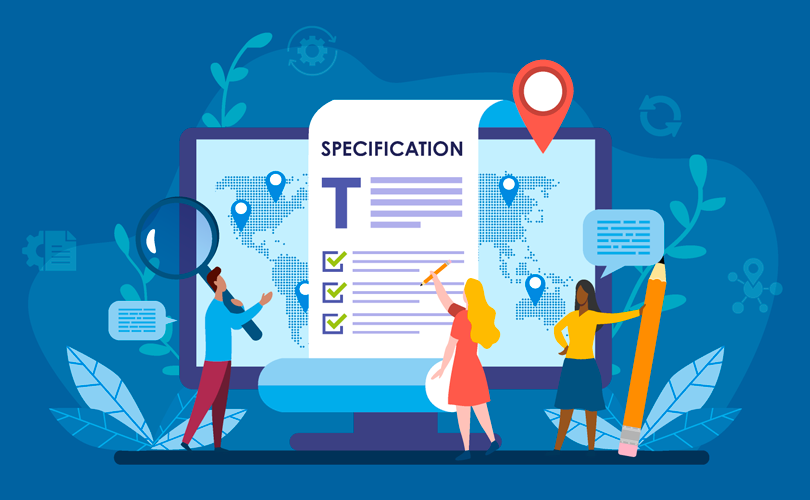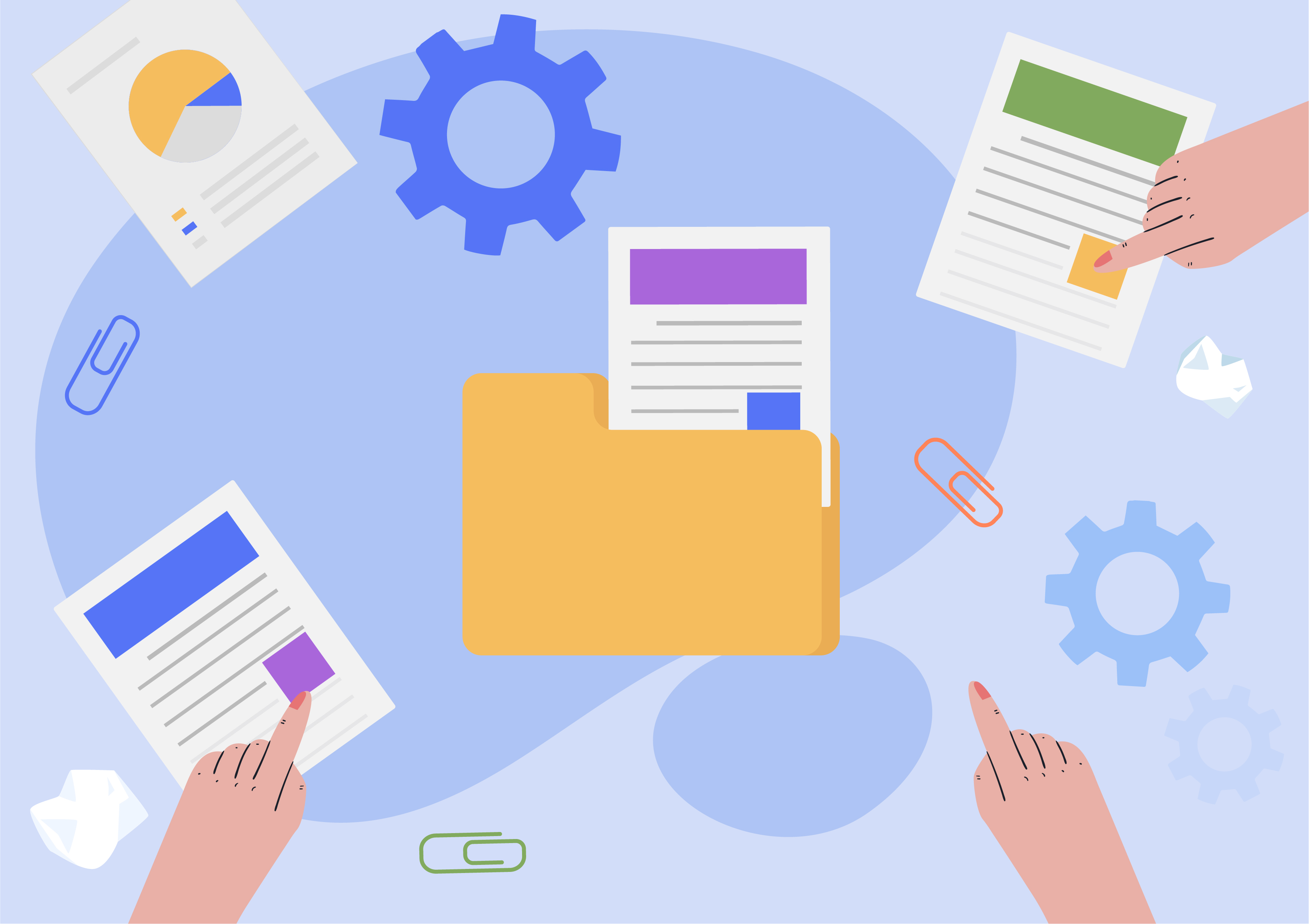Product Specification for Startup
You’ve come to the correct spot if you’re a rookie in the field of product management and never had to develop a product specification yet. Here’s a rundown of everything you need to understand as well as how to write a versatile and accurate product description. We’ll go over exactly what product specifications are and the ways your staff can utilize them to speed up the development cycle in this article.
What is Product Specification
A product specification (commonly known as “product specs”) is a description of a product you’ll be creating, including its appearance, prerequisites, and functionalities. It might also comprise the personality or consumer for whom the product is being created. Product development is not micromanaged by a strong product specification. Instead, it provides them with important details concerning clients, company requirements, and several parameters to aid in the development and production of a solution.
The product specifications documentation must be comprehensive and written in a way that any person with access to it can understand. It must respond to the following fundamental queries:
- What is it that is being constructed, and the reason behind doing so?
- What is the aim of this new good or service?
- What criteria do we use to determine success?
You may begin developing a product specification as soon as you get an idea and continue to do so until you are ready to move forward with product development.
Product Specification: Purpose and Importance
A specification’s aim is to offer a definition and explanation of a product’s needs, constituents, capacity or efficiency, and/or the service or labor to be undertaken in order to develop a product.
For 3 motives, written requirements are critical:
- They define the expectations for an acceptable strategic framework for a certain disparity in a formalized, systematic, and dependable manner.
- They assist team members in developing consistent and coherent thought processes in regards to how they’re expected to perform, ensuring the team’s cohesiveness.
- They are frequently included as part of a (legal) agreement involving customers, designers, consumers, and subcontractors, outlining every group’s responsibilities to the project as a whole.
There seems to be a slim possibility that interference will truly fix the discrepancy if the needs aren’t as well stated as feasible. Additionally, unclear criteria frequently result in systems that simply do not function or are insufficient in some way. Intervention strategies that are not planned with clear criteria in mind will struggle in the industry and hence serve nobody.

How to write a Product Specification for a development team
The following is a list of what must be included in your project specification document:
- Describe your business briefly.
You may provide relevant information about your business, such as:
- Industry of activity
- Main services or commodities.
- Stakeholders in the project development
Going into further depth is therefore unnecessary. Simply provide sufficient data for the contractor to comprehend organizational objectives and project concepts.
- Your project’s details
Summarize the project plan and give a quick overview of the broader idea. Following that, it may have:
- The project’s title or a comprehensive title, so the staff knows what to anticipate immediately.
- Determine the project’s features so the staff is aware of the specifics and potential challenges.
- To make sure that the initiative is staying on track, establish SMART (Specific, Measurable, Achievable, Relevant, and Time-bound) targets.
- Showcase your distinct selling features.
You may discover your USP by analyzing and comprehending the advantages and drawbacks of your main and secondary rivals. Recognizing your point of differentiation will enable you to provide fresh value that may just assist your business to outperform the rivals and capture the marketplace.
- Calculate the cost of your project.
Outline the total budget breakdown and funding sources. Approximation assistance is available from the development firm with which you’ve partnered.
- Establish a delivery date.
Create a timetable for the project’s completion, as well as the time necessary for every step, and establish checkpoints to measure progress. To set appropriate timelines, you might enlist the assistance of your development firm.

How to write a Product Specification to start a project
Every second, 3 new companies are formed, for a total of 11,000 per hour or 260,000 per day. It implies that even if you don’t improve quickly enough, you’ll quickly be left behind by potential competitors. Staying on top of the competition is critical, and you’ll require a strong strategy (see SRS).
What must be included in the Product Specification
A product description is based on design specifications, technical details, and other features unique to the good or service.
The following are common aspects of a product description:
| Summary of your good or service | This is a broad overview of the good or service. This part should give the audience a quick overview of the product’s notion and the reason behind making it. The product overview describes how the finished good or service will appear, what functionality it will include, and the time it would take to produce. |
| Business Case | The economic justification for the product’s development. It discusses the advantages or profits that the product provides to the firms within the industry. It also considers the finances and other facilities needed to accomplish the work. |
| User Stories | These are brief remarks from the point of view of the good or service’s end-users. They describe the functionalities that people would like in the new service or product. A basic framework of User Stories may be used to write such narratives. Implemented: Regarding Software Design That Is Flexible: I’d like [objective] as a function such that [advantage]. |
| User Persona | This specifies the people for whom the service or product is intended for and who the primary demographic is. A good user profile is a fictional figure that falls into the intended audience and has an issue which the technology may address. |
| Product Design | For an idea, you’ll be required to build a prototype, so begin by illustrating a schematic. You may alter your idea as you proceed into product development to accommodate any modifications you want to undertake. |
| Functional Spec | A written report explaining the product’s features and how the users may use it. You could also wish to provide a paper with versatile technical requirements for the staff. |
Now that you know what to include in your product specification, you can create your own by following these steps.
Product Specification: Stages of Creation
When writing your product specification, keep these six steps in mind:
Stage 1: Identify the issue
What issue or obstacle would this product assist consumers in overcoming? Creating goods that don’t answer particular company or customer demands is pointless. Ensure the product synopsis includes a list of the requirements and issues that the commodity will answer.
Stage 2: Analyze Client Response
Addressing your clients’ discomfort is critical in determining the issue your product attempts to tackle, whether it comes in the form of client dissatisfaction, inquiries, ideas, or suggestions. User stories will assist you in determining the product’s aim and the ways it will make your consumers’ lives easier. Client response will help you understand your clients’ preferences which will help you improve your product resulting in a better experience altogether.
Stage 3: Begin internal discussions
Stakeholders’ input must be taken into account when developing a product as it will be beneficial. It encourages a new, wide viewpoint. Staff would also become more committed to participating and collaborating if they feel like they can play an important role in the development phase. By including everybody in the firm in the conversation, you can relieve some of the pressure on yourself and recruit additional individuals to help you finish the project.
Staff will have a stronger connection to the product and will be more involved in its success as a result.

Stage 4: Evaluate Product Requirements
Determine the criteria for building the product and achieving the intended result. These are the kinds of things that product developers will need to understand in order to produce a safe, practical product that does what it’s supposed to do. Dimensions, safety requirements, expiration dates, and an overall product design specification should all be included. Other requirements, such as particular UI/UX concerns or color palette, may well be specified subsequently in the design stage.
Stage 5: Participate in user testing
Make an initial design that you can test with your best consumers. Request that they use the prototype to accomplish a number of tasks. It will assist you in determining which functions are critical and which are seldom (or never) utilized, as well as what causes annoyance or misunderstanding. Make a note of any jobs that appear to be difficult or complex to perform.
Stage 6: Refine and Release
Modify your product specification based on the useful information gained during user testing. Based on the findings of user testing, determine what is appreciated, resented, complex, or unneeded, and solve issues and amend requirements as required. Evaluate whether there are any features or areas where consumers get stuck and think of the ways you might enhance them. Whether you must get rid of any feature entirely?
You may deliver your product spec to your team to start manufacturing after you’re satisfied with it. You must have no doubt that specifications have been reviewed by a significant number of internal and external stakeholders that are happy with the final product.
Tips for creating a Product Specification
Evaluate these recommendations:
The specification report must be straightforward: One doesn’t have to start from zero and produce an extremely long specification. Use smaller stages and strive to complete your initial draft of the project definition documents in an hour or two.
The advantage of swiftly producing the specification is that you may discuss it with your peers and development team, receive a lot of comments and follow-up inquiries, and then create a new iteration after an hour or two.
Project Description: This must be a brief summary of your product, approximately half a page in length. You should be able to compile it in half a page whether it’s a smartphone app, a site, a chat assistant, or a complicated unified solution. It must provide a description of your project as well as an explanation of its goals. You may include the following:
- Success criterion – how do you know whether your site or application is performing as expected?
- If maintenance is required, who must be responsible for it?
- Timeframe for the project and a due date.
- The budget that is ideal
All of the web pages with almost all of their features are listed below: This may appear to be difficult, but it is actually quite easy. All you have to do now is make a hierarchical list of all the pages, screens, and functionalities. It takes hardly any time to create and gives your product a very obvious framework.

User Path: Amongst the many critical components of your specs, one is the user path. You describe how consumers utilize your product in this section. It may be created in Word, PowerPoint, or maybe on a notepad or a whiteboard. You may also utilize software like iMindMap, Mindmaster, or DriChart. The user journey is a framework that is created by the developers so that users who use the product follow a specific route. Here, errors come at a heavy price. If this aspect of the specs isn’t thoroughly thought out, you might wind up with very unsatisfactory outcomes after the product is delivered.
Design Mockups or WireFrames: This section of the specs is where you may let your imagination run wild. It might be simple or ( if the company has hired a designer) it can take days to complete. You may draw them by hand or use basic graphic tools to create them. The majority of them are quite inexpensive, with some even allowing you to make a working model for free.
Tech Stack Information: This section is optional, since you may obtain advice on the appropriate technology stack for your project from your development team. However, if you’ve got a particular need for a technology stack, be careful to include as much detail as possible.
Conclusion
When you’re just getting started on a project, the scope document is crucial. Of course, as you learn more about the product and receive feedback from users, needs may change, but at that point, you’ll be in a different mode, with a team that is ready to adapt. Finally, we’d like to point you that the length of time this procedure takes is highly dependent on the size and complexity of your product. And, of course, how well you are prepared in terms of knowledge and abilities. If you’re a newbie, stick to this procedure; it’ll get you decent outcomes.
Creating a product specification can be very difficult, but if you face any kind of query about the same, don’t hesitate to ask for help especially if it’s from professionals. You can also write to us by filling the feedback form and our experts will get back to you and help you create an amazing product spec for your organization.

Subscribe to us










